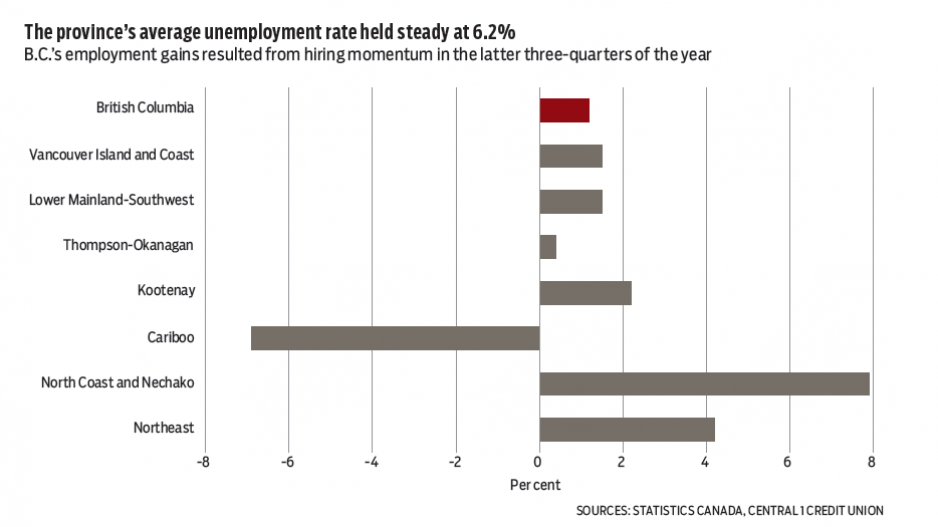B.C.'s labour market ended down in 2015, but managed a healthy hand-off to 2016 while signalling modest expansion in the economy. Following a flat November performance, provincial employment dipped by 7,900 persons or 0.3%, to underperform to the national gain of 0.1%. Four-fifths of the decline resulted from full-time losses, although part-time jobs posted a larger relative decline. While December’s pullback eroded some of the substantial uplift observed in September and October, B.C. hiring momentum continued to outpace the rest of the country.
Stronger growth since April 2015 pushed year-over-year December employment growth to 2.3%, which was strongest in the country. In comparison, national growth was 0.9%; the next highest performers were Ontario and Quebec at 1.2%.
A closer look at sector performance in December further shows a labour market performing better than headline figures suggest. The agriculture sector declined by 4,700 workers (18.1%) from November.
The unemployment rate climbed sharply from November by half a percentage point to 6.7% of the labour force and 1.2 points from a year ago, despite increased hiring. While this seems like a negative trend, the increase reflects a sharp turnaround in labour force participation. Stronger hiring momentum has induced more disengaged and out-of-work individuals to look for jobs, signalling improved labour-market demand.
On a full-year basis, employment growth in B.C. averaged 1.2%, which was in line with Alberta and second only to Manitoba, which posted a 1.5% gain.
National employment growth averaged 0.8%. As noted, however, B.C.’s gain was entirely the result of hiring momentum in the latter three-quarters of the year, with annual gains driven exclusively by full-time hiring. The average unemployment rate held steady at 6.2%.
While three-quarters of all jobs created were in the Lower Mainland-Southwest, relative growth was strongest in the North Coast and Nechako (7.9%) and Northeast (4.2%). Average employment climbed 1.5% in the Lower Mainland-Southwest and Vancouver Island regions, rose by 2.2% in the Kootenay and contracted nearly 7% in the Cariboo. Thompson-Okanagan employment was steady from a year ago •
Bryan Yu is senior economist at Central 1 Credit Union.




